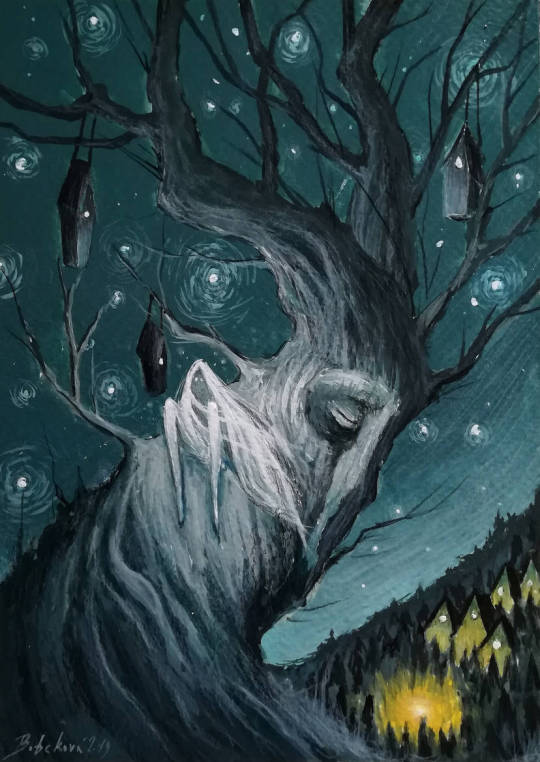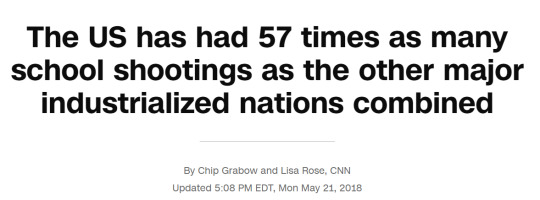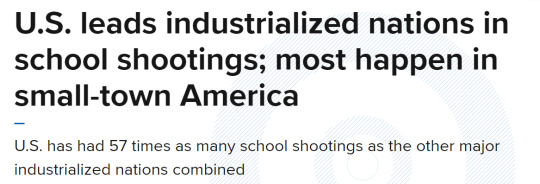#First world
Text
White first-worlders: Cuban food is so bland.
Me: No it's not, it tastes just like Brazilian food, fuck you. And if it were it'd be the US's fault for the illegal embargo.
#brazil#cuba#canada#united states#cuban cuisine#brazilian culture#brazilian cuisine#cuban culture#first world#third world#classism
28 notes
·
View notes
Photo

Countries that are considered developed.
by u/_crazyboyhere_
114 notes
·
View notes
Text

multifantober2023 prompt 9: portal
The portal to the First World on Bald Hilltop.
[please click to embiggen!]
#multifantober2023#pathfinder#pathfinder kingmaker#first world#bald hilltop#fey#my art#i was looking forward to this prompt... the first world is so pretty
43 notes
·
View notes
Text

#family leave#developed country#rich nation#first world#paid vacation#universal health care#affordable college#child care#elder care#2024 election
79 notes
·
View notes
Text
Planar Tour Guide: The First World part 5

(art by SilviaBobekova on DeviantArt)
Conclusions
The First World is, to put it simply, a place of generative chaos, where even the act of destroying something or someone just means it will come back later, though perhaps not unchanged. It is the ultimate progenitive chaos in a sort of cosmic answer to the entropic, destructive chaos of the Maelstrom (Which I get whey they did it that way, but I don’t personally agree with. More on that when I tackle the Maelstrom)
But because it is always changing and draws upon everything that ever was, will be, won’t, and never will be, it is also a place of simultaneous wonder and horror. The same forest of mushrooms that inspired childlike awe before may become a place of horror when the effects that the spores of said mushrooms have are revealed, to say nothing of bright, childlike fey that turn monstrous in disposition at the drop of the hat.
Of course, not every trip to the First World is like that. Sometimes things are exactly how they seem, whatever that may be, but it’s no excuse to let your guard down. Even Elysium, the plane of chaos and good, has it’s dangers, and the First World has no pretense of rightness and fairness. In fact, what is right is purely determined by who is in charge of a realm, in a poignant parody of how mortal authority and law tends to work.
I suppose at it’s core, that’s what a lot of fairylands in fiction are: exaggerated parodies of every subject the author seeks to bring up. The wilds are simultaneously more fantastical and wondrous, but also even more fickle and dangerous, and so too are the politics of the pockets of civilization you find there as well.
That’s not to say that there are not goodly fey and other entities as well, of course, some seem to embody concepts such as noble righteousness or simply being kind and sweet all the time, after all, so there are also plenty of allies to be found there, even if their outlook is somewhat alien, which can also lead to conflict as well.
The concept of a “fairyland” is very old, as it is a derivative of the almost universal concept of an “otherworld” where spirits dwell. Sometimes this is a land of the dead, sometimes it’s more a place of nature spirits and monsters, and so on. Perhaps the most well-known ideas of a land of the fae comes from Gaelic mythology, where we hear names like Tir na Nog, Elpahme (which does sound a lot like the Nordic Alfheim, doesn’t it?), and so on.
Such realms varied in apparent size depending on the telling, and could range from hidden illusion-cloaked castles or cities far from civilization, to being entire realms or dimensions of their own. The only really consistent way to get to them seems to have been getting lost, however, either losing one’s way from civilization or following a fey creature to one of the entrances.
A lot of more modern depictions of such fairylands often borrow imagery from the works of Lewis Carrol, particularly Alice in Wonderland and Through the Looking Glass, and other such stories where it’s clear that imagination is a massive defining force of the realm (so much so that we the reader are left wondering if any of it was real to begin with). As we’ve seen with the Dreamlands, however, events in the First World don’t need to be “real” in the traditional sense to have far-reaching consequences back in familiar realms.
All said, if your adventure takes you into the First World, your GM has an opportunity to craft a truly unforgettable and surreal experience, but it is one that must be handled with care. I hope you enjoyed this special, and look forward to more archetypes and options next week!
8 notes
·
View notes
Text
There's basically six types of countries. Developed ones, underdeveloped, rich third world countries(US, south korea, uk), petrostates, japan(nobody knows why it grows), Argentina(nobody knows why it won't grow or how to fix the economy)
#paraphrasing kuznets here#economics#first world#third world#rich third world countries have 1st world police state but third world welfare or inequality
20 notes
·
View notes
Text

4 notes
·
View notes
Photo

#Seerut Chawla#first world#first world privilege#cultural revolution#western arrogance#religion is a mental illness
30 notes
·
View notes
Text
D&D prompt/thoughts/theory (this is copied from a comment)
its really hard to come with why there are not more dragons of other types (asides from the creators/writers of DND just not coming up with them; i would not say they're lazy for not trying but truth is it's hard to think/write/create this stuff) especially with all the expanded and obscure and inconsistent/never explained writings of the lore of dungeons and dragons; that it is probably indescribably hard to make any of it "canon". (sorry if this typing come off inconsistently or ranting.)
but so far in my attempt to take a crack at this, i've been coming up with some different ideas just using what i know/have discovered or have come up with so far, though we call tiamat chromatic but maybe what she actually is; is prismatic. when it comes to tiamat lore; we only get so much information about her, we know her as the imprisoned in hell five-headed terror and we mostly assume she's always had five heads but what if she didn't; the ROT book classifies her as a gargantuan Fiend; Fiend? why not a dragon? or a dragon fiend? FTD gives us aspect of tiamat and she's classed as dragon but aspect, aspect is the word they use for defining her, meaning this is not the real tiamat. when it comes to bahamut he's described as the creator of the metallic dragons and is platinum scaled; meaning one, one color for him and he has no extra heads, tiamat is described as having five-heads with the body of a red dragon; since one idea is that bahamut is tiamats BROTHER why are they not very similar to each other?! since another idea is that dnd is a MAGICAL world that creatures/gods/monsters are born/created/shaped by the different worlds and environments; i think tiamat looks the way she does is because she has been changed by the environment of hell for living there for so long that she lost her true form!
so let's just try to go back way before tiamat was in hell, to a different time and place during and before the dawn of the "First World" and theorize this idea; that when tiamat was born her True form was that her scales were so indescribably colorful, bright etc. that when one sees her, her scales seemed as though you could see all the colors of the world through the reflections of the scales or that the scales had such a shine to them that if you walked around tiamat you could see her body in any/all the colors maybe even mixed, so what if the reason why we have only red, blue, black, white and green for her colors/form and the chromatic dragons is because after the first world was destroyed and tiamat was probably badly defeated/injured; that there was only a handful of her and bahamut creations that survived while the rest of them were destroyed! (and also maybe they didn't get that far with making orange, purple, pink, mercury, steel and Titanium dragons cause they were creating a world full of things and when the outsider gods came there was only what they made so far so maybe the 'First World" was an incomplete project so to speak)
so now that tiamat is in hell, her first work of creation is gone, Sardior is fucking dead, possibly has feelings like her brother betrayed her (i mean something had to have happened there and somewhere in between that made the Dragonfall Wars happen), she fought against impossible odds but lost and had the crap beaten out of her, hates the "gods" and their followers, wants revenge and now seeks to become more powerful than ever so she can destroy the world and the gods! hell hath no fury like the wrathful vengeance that this "woman" now seeks upon the universe; she is DONE with all of this! no wonder why she has been changed into what she is now as a reflection of the events that have changed/shaped her life; for as we know, to paraphrase: ONE BAD DAY can CHANGE YOUR LIFE. . .forever. damn that was a lot of text to type i did not expect this to be this long, sorry about that. but if anyone enjoyed this, glad you like it and hit me up, take care now.
#dnd#D&D#Dungeons and Dragons#Tiamat#rise of tiamat#fizban's treasury of dragons#dragons#fantasy prompt#dnd prompt#theory#my post#first world#sardior#dnd theory#dungeon and dragons theory#chromatic dragons#bahamut#metallic dragons#elegy of the first world
7 notes
·
View notes
Text
My AmeriKKKa
We are a colony of capitalist exploitation
Indebted citizens of a democratized nation
Currently, we are experiencing a life standard demotion
Controlled demolition provides subtle commotion
The Ponzi scheme that is our economic system
Is fond of mutation and the cultivation of a new ecosystem
How history repeats itself with new structures
While the nation-state sinks along with its infrastructures
#truths89#poetry#ZisaAziza#NegressOfSaturn#empire#collapse#political neglect#imperial neglect#jackson#flint#delaware river#accidents#pollution#infrastructure#falllen bridges#first world#debt#credit economy#delusional first class#citizens#economic servitude
3 notes
·
View notes
Text
Starfinder - Transitive Planes Part 2
This is Part 2 of our look at the Transitive Planes, focusing on the Shadow Plane and the First World. Come along on a fantastic voyage!

2 notes
·
View notes
Text
The racist bigoted way the first-world press talks about American school shootings
They often say that "the US has more school shootings than any first-world country" implying that third-world countries are rife with school shootings.


The US has more school shootings than ANY country.
Between January 2009 to May 2018 you know what the highest number of school shootings in a third-world country (Mexico) was?
8.
You know what the US number of school shootings in the same timeframe was?
288.
The 19 countries with the highest number of school shootings are almost evenly split between first-world countries and third-world countries, with the first-world countries actually being the higher number.

(Brazil had 2 school shootings, btw; same as Canada and France)
#bigotry#gun violence in the united states#the united states of america#the united states#media bias#first world#third world#school violence#american news#news articles#news media#racism#did you know#little known fact#random facts
60 notes
·
View notes
Photo

The First World, approximately 11% of the world population.
190 notes
·
View notes
Text

I've noticed when environmental activists talk about new, clean technologies, they direct their solutions to achieving first world comfort. They don't think about the Third World children gathering lithium used in batteries for pennies.
#Committees#Focus groups#Skeptical#Clean industry#Inclusive#Inclusion#Third world#First world#Environment#fair trade
3 notes
·
View notes
Text
So, how many post-apocalypses have you read in which characters remember a day/week/month/year that's exactly like the one we're having now?
#first world#third world#i've got several dozen only from the last few years#post apocalypse#to hell in a handbasket#everything counts#climate catastrophe#fascism#war#abolition of rights#alienation#hypercapitalism#incl thinking can sell out and still survive#nope#one planet#no planet b#shit situation cw
2 notes
·
View notes
Text
Planar Tour Guide: The First World part 3

(art by FLOWERZZXU on DeviantArt)
Denizens
Now that we’ve established the rules of the terrain (namely that there are no rules and anything can and will happen), we have to talk about the creatures that live there. Now, many might assume that the answer to that question is fairly obvious, and perhaps it is, but we’ll soon see exactly how nuanced the answer really is.
First of all: Yes, the First World is the origin of all fey and fey-descended creatures, all of which are inherently magical beings of whimsy associated strongly with nature, but were deemed not desirable for the final draft of reality, not that that stopped the fey, for plenty travel to and from the material plane or even move there entirely. However, in the First World, every kind of fey, be they the more familiar humanoids or stranger forms, can be found there in various quantities, though perhaps the major exception is the svartalfars, those shadowy fey that followed the exiled Eldest Count Ranalc into the Plane of Shadow, making them rare indeed in the realm of the fey.
Such fey vary between living solitary hermit-like lives in whatever environment suits them to constructing full-on cities, often forming a civilization around some noble fey’s court, though very few would say that they’re so attached to civilization that they couldn’t go back to a life of whimsy among the trees if needed, and with their long lives and tendency to reincarnate later if slain, they probably are right to treat the game of society as a passing dalliance. Of course, exceptions exist from fey species that thrive in civilization to those that seem to genuinely enjoy it.
With such varied and whimsical personalities, it can be hard to know if a fey is an ally or a foe, and that may vary with an individual depending on whether they decide you would make good sport for a prank or a more malicious game. Recall that with their reincarnation on the First World, most fey don’t see death as more than an inconvenience, and have little concept or care for the permanency that mortals attribute to it.
That being said, plenty of fey can be benevolent, or at least bargained with, and a seemingly hostile encounter can be averted by finding the humor in the fey’s “joke”. However, others cannot be reasoned with, and will prey upon mortals for the sport of the hunt or simple cruel enjoyment unless there is some local fey law preventing them from doing so.
Of course, not every creature in the First World is truly fey. Some have the fey creature template, or the First World template if you’d prefer their power level to be more in line with the base creature. These can represent all sorts of creatures, many reflecting natural animals in function and form, though some may seem truly exotic, dreams of creatures from distant worlds, or never were at all. This also includes exotic and strange forms of sapient life, ranging from talking animals to mortal immigrants to the First World to beings that superficially resemble mortal peoples but with strange quirks.
Of course, some First-World natives are fully magical beasts, such as the grodair, slimy fish-like creatures that bring water with them everywhere, turning the ground beneath them into easily traversable bogs and ponds, or even flooding a region entirely.
And of course there is plenty of exotic flora as well, fey versions of familiar plant creatures, as well as more exotic fair like the dragon-formed zomoks: spirits of plant life that bend local foliage into the shape of a draconic body.
Of course, the First World has it’s own form of dragons, the linnorms, which originated here and according to him, were sired by Ragadahn. Though such serpentine wyrms long ago spread to the material plane, they carry with them their primal power and vengeful ability to curse those that would dare slay them.
However, perhaps the most infamous and legendary beings in the First World are the Tane, living weapons crafted or discovered by the Eldest, though now most are far too strong to be controlled. Beings such as the jubjub birds, bandersnatches, jabberwocks, thrasfyrs, and sards, as well as the unique and mighty Leviathan, and even stranger things that we’ve only heard bare mention of. Such creatures may be terrible and destructive, or they might, on rare occasions, offer aid. Most, however, are content to be left alone, if only fate would allow it.
As we can see, the First World has a myriad of wonders beyond simply the fey that dwell there, and as always, which are benevolent and which are dangerous vary a lot by the situation and the individual. Next time, however, we’ll look deeper into what sort of adventures can be had there!
9 notes
·
View notes